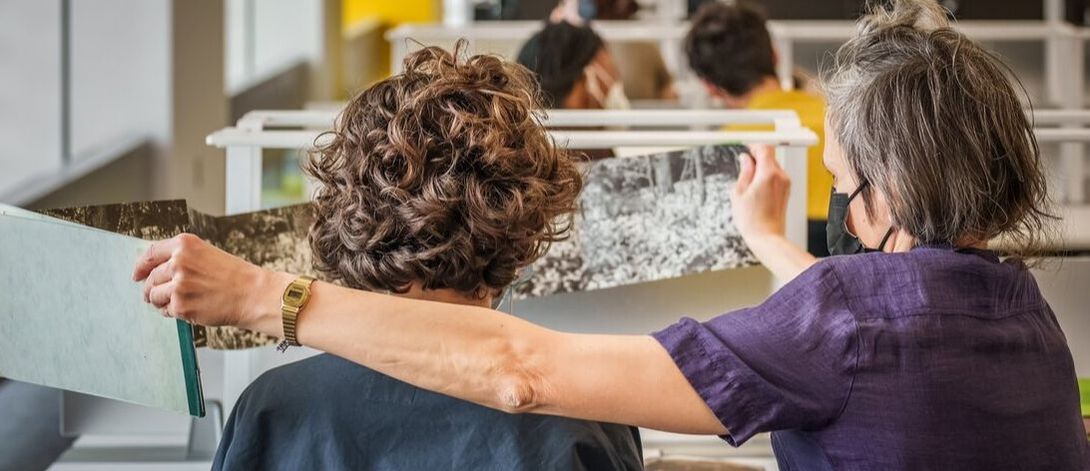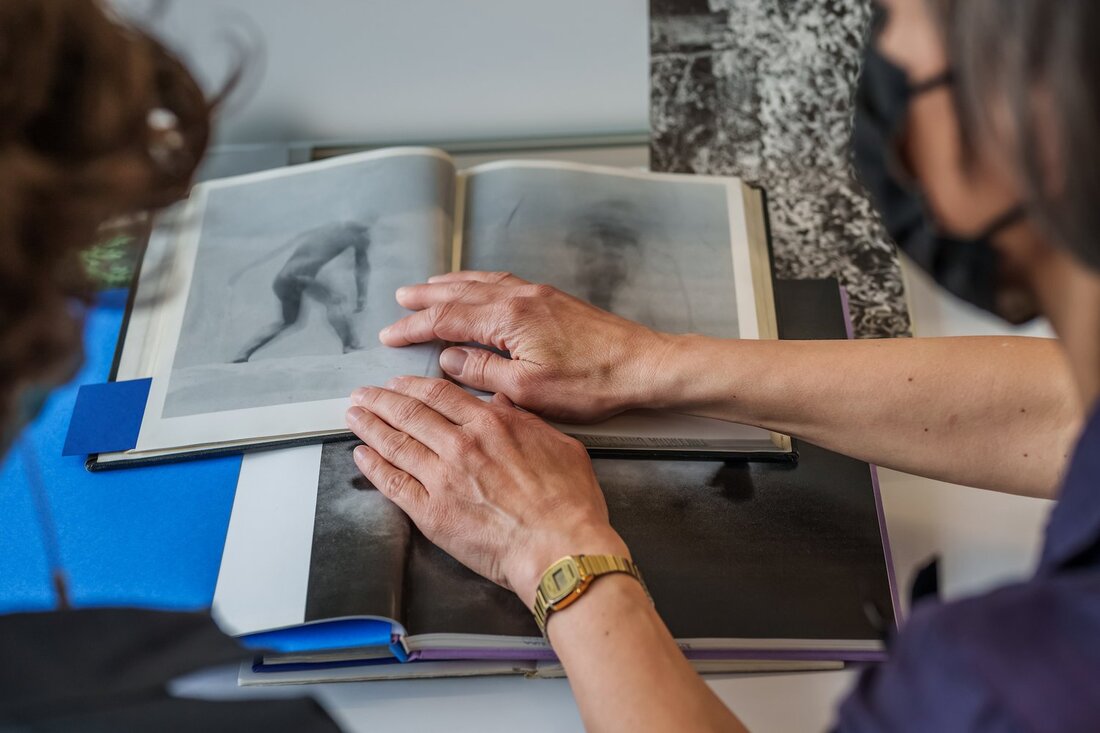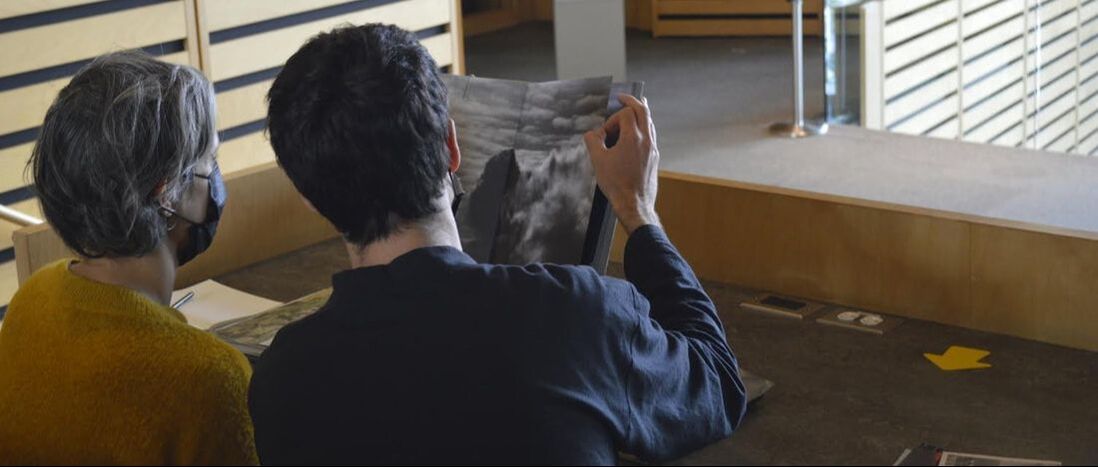|
At the beginning of June I took the train to Montreal to catch Manual, created by Adam Kinner and Christopher Willes, at OFFTA. [1] Presented inside Concordia’s Webster Library, Manual largely presented a familiar dramaturgy of participation as we are directed to look, really look. A gift from early-twentieth century Russian formalism, this is the ostranenie of the art frame that uses participation to displace the ordinariness of life. And what is not to love about really looking at a library. You will have to excuse my sentimentality, but as an academic who spends a lot of mundane time in libraries, the experience of aesthetic defamiliarization blossoms into affection and I am reminded by Manual that a library truly is an everyday miracle in action. But apart from ostranenie, what other participatory dramaturgies are at work here? And what do they mean? A couple things that are not happening here. Manual is not exploratory. We are not set loose in the library to choose an autonomous path. [2] I am attached to my guide Christopher. He asks me to silently follow him and I do. The other quality to notice about Manual specifically in my relationship to Christopher is that this is not an encounter (pace Nicholas Bourriaud’s relational aesthetics). The intent of the experience is not for us to meet each other. The focus of the work is not autobiographical. It is not about me as me (see Lost Together or 4inXchange) Likewise it is not about Christopher (see Trophy or human library experiences). [3] In addition to remaining almost completely silent which restricts verbal interaction, there is no mutual gaze; Christopher doesn’t look at me. He is either ahead of me or he seems to hover just behind my shoulder. We look at things together but we do not look at each other. Companionable, playmate, but ghostly. To describe Christopher’s function in Manual, Avery F. Gordon’s definition of a ghost resonates for me: “The whole essence…of a ghost is that it has a real presence and demands its due, your attention.” [4] Just as I am not “me”; Christopher is also not “Christopher.” And I mean this in the nicest way. Manual is not about confessing or sharing secrets. (Which is, to be honest, a relief sometimes.) But we are engaged in a kind of intimacy. We are playing a private game in a public space. We are secret weirdos. We are making secrets. The performance begins with both of us looking at a notebook in Christopher’s hand. There are pre-written, penciled messages on a small palm sized spiral bound flip notebook. “Is this thing on?” I follow Christopher silently through the library trailing a metre behind. Initially I am attuned with heightened attention to the library-ness of the library. Look books! (Cool.) We play Follow-the-Leader through the stacks. When Christopher pauses to inspect the bookshelf, so do I. He points to a book title on a spine. (I can’t remember exactly what he picked but it amused me.) I choose a similarly quirky book title and touch it. He picks another one. So do I. Is that what was supposed to happen? Dunno. It is a silent improvisation. Throw the ball. Catch it. Throw it back. This is a very satisfying kind of co-creative partnership. A tiny game for two. As it continues Manual opens other silent creative dialogues. At another bookshelf, Christopher presents a single piece of paper, and invites me to read with him, alternating sentences in whispers. I am wearing earpods and my voice and Christopher’s voice sussurates in my ears and in the auditorium behind my eyes. Next Christopher opens a book of abstract photography and choosing one image, he suggests that we play, you know, that game where you find images in the clouds. “A wrinkled piece of cloth,” he says. “The craters on Mars,” I reply. And so on. In the final section, we take three giant steps backwards and we stand next to each other, facing a shelf wall—the sorting shelf—where books are collected awaiting a return to their proper order elsewhere. The books are a motley mix of all subjects, temporarily companionable side by side. Christopher and I too. He gestures for me to press play on the audio player. As his voice sounds in my ears, musing about the serendipity of books that have been pulled out and read, and then put back, I start to listen. Christopher takes another step backwards and then with a quick shift behind me, he is gone. (I know he is not really vanished, but like the audience to a magic trick my attention has been adeptly directed elsewhere.) Was he even here? Why is the play called Manual? For a theatre scholar, this is always a good question to ask. Certainly, the show is manual, that is, tactile with your hands in a way that much theatre is not. Christopher’s hands are a prominent element in complement to his whispered voice. He flips the pages of his instructional notebook. In another extended scene, he also performs a kind of hand-choreography when he opens for me a series of books, deliberately turning to pre-bookmarked pages and slides sheets of cardboard to hide and reveal portions of the chosen pages. I did consciously remark Christopher’s hands—the skin, the nails, their texture and shade. A manual is also a book of instructions. Thinking specifically through the lens of participation, a manual is a ‘how to do stuff.’ And of course, participation is all about doing stuff. Usually things that we have not done before in places we have not been before. And as we’ve noted elsewhere, participatory audiences need instructions. The contents of a library—fiction and non-fiction—are manuals for everything in our existence, I suppose. The show itself then perhaps is a manual to the manual, an experience in how-to library. This is how you search—first you walk. This is how you choose books—try pointing. This is how you look—really look. This is how you read—let’s read together. Concentrate. This is how you put the books back—notice how they wait so patiently. It is a complete lifetime of libraries in miniature. It sounds trite to say so, since this is true of the accumulation of all experience, but I will never library again without thinking of Christopher, ghost of the library. Notes
[1] https://offta.com/en/evenement2022/manual/ [2] Consider other works in our gallery of participatory performance like Landline or b side. [3] https://humanlibrary.org/ [4] Avery F. Gordon. Ghostly Matters: Haunting and the Sociological Imagination. University of Minnesota Press, 2008. p.xvi.
0 Comments
Leave a Reply. |



 RSS Feed
RSS Feed
